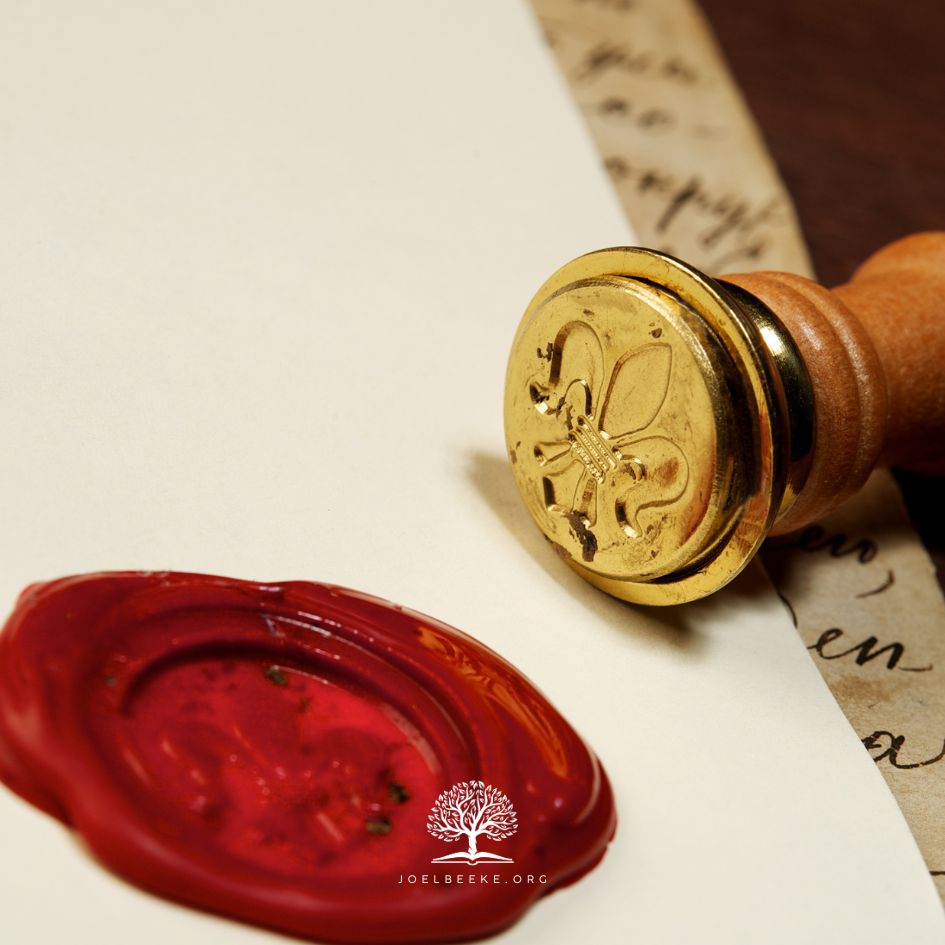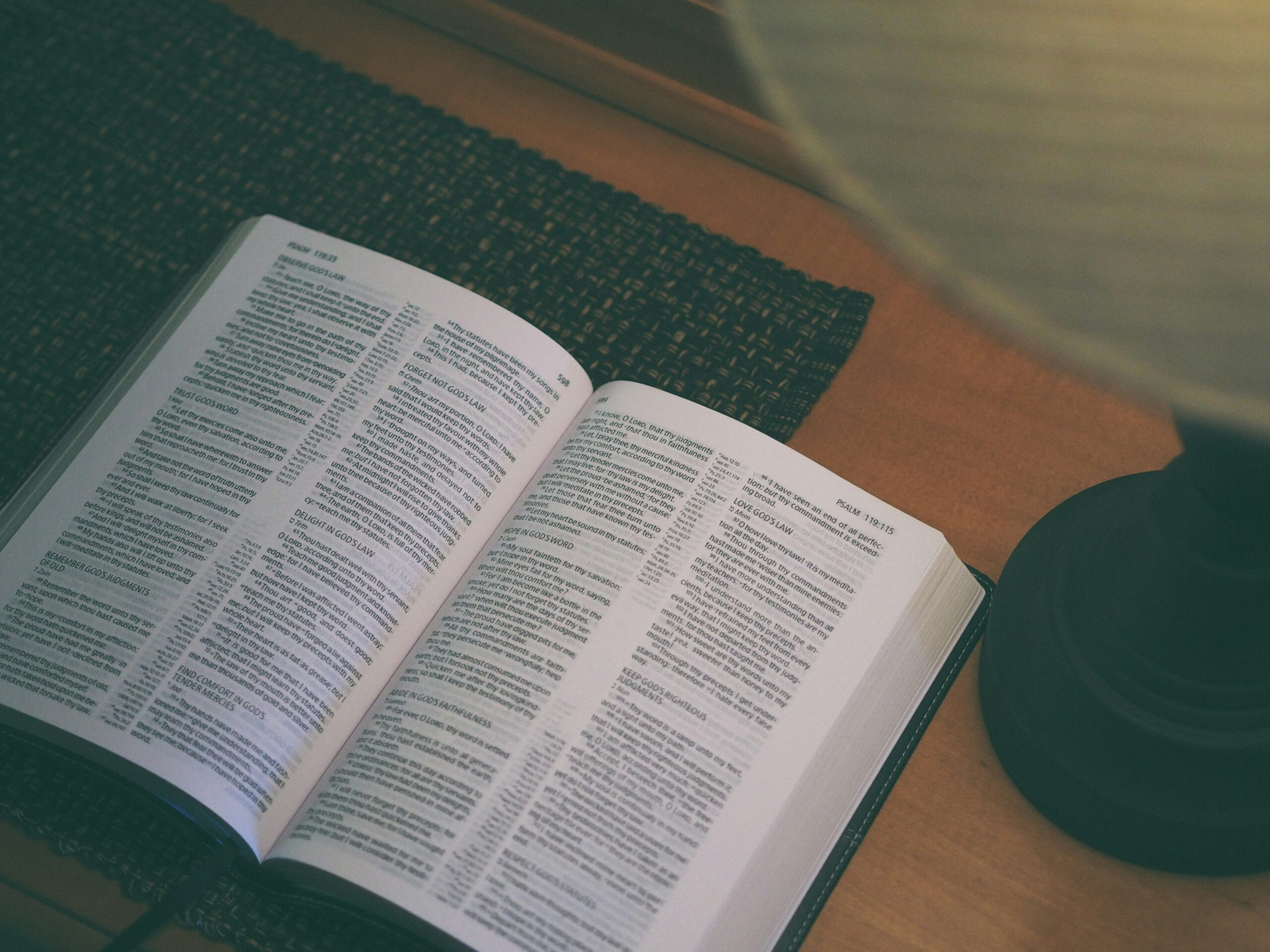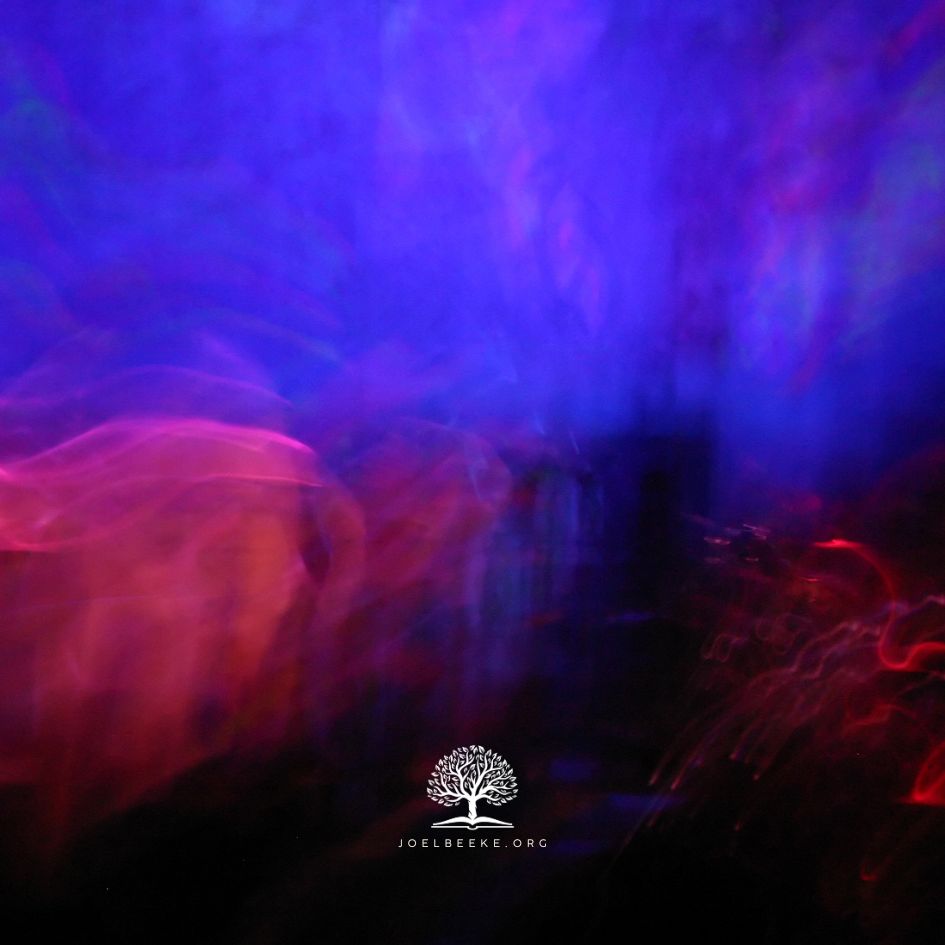The Complete Works of Richard Sibbes, meticulously edited with a 110- page memoir by Alexander Grosart, was published by James Nichol of Edinburgh in the 1860s and reprinted by the Banner of Truth Trust.1Cited throughout this chapter as Sibbes, Works. For an English translation of the concluding Latin sermon in volume 7, see Richard Sibbes, “Antidote against the Shipwreck of Faith and a Good Conscience,” Banner of Truth, no. 433 (Oct. 1999): 11–22, and no. 434 (Nov. 1999): 11–22. Sibbes’s most famous work, The Bruised Reed, which has done so much good in healing troubled souls, is now available in paperback from Banner of Truth Trust.2Cited throughout this chapter as Sibbes, Works. For an English translation of the concluding Latin sermon in volume 7, see Richard Sibbes, “Antidote against the Shipwreck of Faith and a Good Conscience,” Banner of Truth, no. 433 (Oct. 1999): 11–22, and no. 434 (Nov. 1999): 11–22.
Let us turn now to Sibbes’s teaching on the entertainment of the Spirit…
The Sealer of our Souls
Sibbes often preached on the Spirit’s sealing. A series of his sermons transcribed by a noblewoman, Lady Elizabeth Brooke, was published in 1637 as A Fountain Sealed.3Sibbes, “A Fountain Sealed,” in Works, 5:409–56. His sermons on 2 Corinthians 1:22–23, published in 1655 in Exposition of 2 Corinthians Chapter 1,4Sibbes, “Exposition of 2 Corinthians Chapter 1,” in Works, 3 passim. were about the Spirit’s sealing. So was a sermon on Romans 8:15–16, The Witness of Salvation: or, God’s Spirit Witnessing with Our Spirits, which was published in 1629.5Sibbes, “The Witness of Salvation,” in Works, 7:367–85.
According to Sibbes and many other Puritans, looking at the role of the Spirit in sealing the souls of believers is very much like examining His work in personal assurance of faith and salvation. Sibbes, however, viewed our sealing in the Spirit as two distinct matters. He distinguished between the office or function of the Spirit as a seal given in regeneration to a sinner and the work of the Spirit in applying that seal to the believer’s consciousness.
John Owen would later call this distinction unbiblical, for he said we are sealed when we are born again, and the Bible gives no justification for a second kind of sealing. Owen, following the early Reformers, taught a oneto- one correlation between those regenerated by the Spirit and those sealed by the Spirit. John Calvin, for example, said that it is impossible to believe without being sealed by the Spirit. For Calvin, sealing represented the presence rather than the activity of the Spirit. Thus, the sealing work of the Spirit belongs to the essence of faith.6See Joel R. Beeke, The Quest for Full Assurance: The Legacy of Calvin and His Successors (Edinburgh: Banner of Truth Trust, 1999), 201–208.
By the time of Perkins, who was often called the father of Puritanism, more attention was devoted to the Spirit’s activity in sealing the promises of the gospel to the believer. The focus was no longer on the Spirit Himself as the indwelling seal but on His activity in sealing or attesting the promises. Perkins’s successor, Baynes, attempted to reconcile the thoughts of Calvin and Perkins on the sealing of the Spirit. Baynes taught that the sealing could be applied both to the Spirit as indweller and to the consequences of that sealing in the regenerate life. He wrote, “The Holy Spirit and the graces of the Spirit are the seal assuring our redemption.”7Paul Bayne [Baynes], Commentary upon the Whole Epistle of St. Paul to the Ephesians (repr., Stoke-on-Trent, England: Tentmaker Publications, 2001), 81. Thus, Baynes distinguished between being sealed by the Spirit, which all believers possess, and being made conscious of such sealing, which only those who are conscious of the graces of the Spirit possess.
Sibbes agreed with his predecessor at St. Andrews, Baynes, though he emphasized the sealing of the Spirit as a “superadded work” and “confirmation” of the believer’s faith.8Sibbes, “Exposition of 2 Corinthians Chapter 1,” in Works, 3:455–56. In so doing, Sibbes turned the doctrine of the sealing of the Spirit in a direction that would gain prominence among the Puritans for several decades.
As I have already implied, Sibbes thought of the Spirit’s sealing in two ways: (1) a one-time sealing, and (2) a sealing that comes later as one matures in the Christian life.
The once-and-for-all sealing of salvation is granted when a person first believes in Christ and God’s promises. Sibbes taught that as a king’s image is stamped upon wax, so the Spirit stamps believers’ souls with the image of Christ from the very moment of belief.9Sibbes, “Exposition of 2 Corinthians Chapter 1,” in Works, 3:453. Such sealing produces in every believer a lifelong desire to be transformed fully into the image of Christ.
This seal, which every believer possesses, consciously or unconsciously, serves as a mark of authenticity. It distinguishes the believer from the world. As merchants mark their wares and herdsmen brand their sheep, so God seals His people to declare that they are His rightful property and that He has authority over them, Sibbes said.10Sibbes, “Exposition of 2 Corinthians Chapter 1,” in Works, 3:454.
The second aspect of Sibbes’s doctrine of sealing is more elusive. Owen argued that Sibbes said sealing had to occur twice in the life of the believer. But Sibbes was not arguing for a second measure of positional assurance, as if to imply that God was not altogether sure of our stance with Him or His stance toward us upon conversion. Sibbes plainly stated: “Sealing of us by the Spirit is not in regard of God but ourselves. God knoweth who are His, but we know not that we are His but by sealing.”11Sibbes, “A Fountain Sealed,” in Works, 5:446–47. The sealing then is for our benefit exclusively, not for God.
So, the second kind of sealing Sibbes wrote about is a process. It is the kind of assurance that can increase gradually throughout our lives by means of singular experiences and by daily, spiritual growth. This sealing has degrees; it can grow with spiritual maturity. Sibbes wrote: “The Spirit sealeth by degrees. As our care of pleasing the Spirit increaseth so our comfort increaseth. Our light will increase as the morning light unto the perfect day. Yielding to the Spirit in one holy motion will cause him to lead us to another, and so on forwards, until we be more deeply acquainted with the whole counsel of God concerning our salvation.”12Sibbes, “A Fountain Sealed,” in Works, 5:452.
Sibbes learned through pastoral experience that many believers are content with the measure of faith and assurance they receive upon their conversion and do not labor for further growth. That prompted Sibbes to suggest that there are three kinds of Christians.13Sibbes, “A Fountain Sealed,” in Works, 5:447–48.
First, there are those who have saving faith but live under a spirit of bondage. They are filled with doubts and fears. They lack the reflex act of faith that ascertains marks and evidences of the Spirit’s saving work in their lives. Sibbes said that they ought to pray for more faith and light to discern the Spirit’s work within them.
Second, some Christians are under the Spirit of adoption but still have fears. They are sealed with evidences of faith, but are often still beset with perplexity and doubt. Their degree of assurance is usually highest when their trials are greatest. Sibbes wrote, “For those who have been sealed by the Spirit and yet not so fully as to silence all doubts about their estate: those should, out of that beginning of comfort which they feel, study to be pliable to the Spirit for further increase.”14Sibbes, “A Fountain Sealed,” in Works, 5:440.
Third, Sibbes said that some believers are “carried with large spirits to obey their Father” as the fruit of the superadded, direct seal of the Spirit that persuades them of their sonship to God.15Sibbes, “A Fountain Sealed,” in Works, 5:448. Those who experience the freedom of a “large spirit” receive a private seal—an unmistakable witness of the Spirit to their souls. The Spirit’s private seal is a “stablishing, confirming grace,” Sibbes said.16Sibbes, “Exposition of 2 Corinthians Chapter 1,” in Works, 3:422. He identified this sealing with the immediate testimony of the Holy Spirit, by which the Father’s love is pronounced upon the believer in particular, usually through the application of such texts as “I am thy salvation” or “thy sins are pardoned.”17Sibbes, “A Fountain Sealed,” in Works, 5:440. According to Sibbes, this establishing seal grants believers freedom to appropriate full assurance through the work of each Person in the Trinity, though the emphasis is on the Spirit in His saving activity. Sibbes wrote:
Every person in the blessed Trinity hath their several work. The Father chooseth us and passeth a decree upon the whole groundwork of our salvation. The Son executeth it to the full. The Spirit applieth it, and witnesseth our interest in it by leading our souls to lay hold upon him, and by raising up our souls in the assurance of it, and by breeding and cherishing sweet communion with Father and Son, who both of them seal us likewise by the Spirit. This joy and comfort is so appropriated to the Spirit, as it carrieth the very name of the Spirit.18Sibbes, “A Fountain Sealed,” in Works, 5:439.
Sibbes sounds mystical at times in describing this special sealing, particularly in statements such as “the Holy Ghost slides and insinuates and infuseth himself into our souls.”19Sibbes, “A Description of Christ,” in Works, 1:24. But Sibbes warded off mysticism in two ways. First, he maintained that this special sealing must never be divorced from the Word of God.20Sibbes, “A Fountain Sealed,” in Works, 5:441. By speaking of sealing in degrees, Sibbes linked all advancement in grace to the Spirit and Word, for any consciousness of sealing by the Spirit is always through the applied Word.
Second, Sibbes said that the genuineness of such sealing may be readily examined. One may know the voice of the Spirit of God by inquiring what followed “this ravishing joy” of experimental sealing, Sibbes wrote.21Sibbes, “A Fountain Sealed,” in Works, 5:441. Fruits of sanctification, such as peace of conscience, the spirit of adoption whereby we cry, “Abba, Father,” prayers of fervent supplication, conformity with the heavenly image of Christ, and applying ourselves to holy duties rather than old lusts inevitably result from such “a secret whispering and intimation to the soul.”22Sibbes, “Yea and Amen,” in Works, 4:134. Sibbes thus emphasized both the intuitive testimony of the Spirit and the sanctifying fruits of the Spirit. The Spirit’s sealing is inward in its essence and outward in its fruit.
Sibbes taught that this special sealing is granted by the Spirit to saints particularly in times of great trial. He said that the Spirit gives such seals “even as parents [who] smile upon their children when they are sick and need comfort: so above all other times God reserves this hidden sealing of his children with a spirit of joy when they need it most.”23Sibbes, “Exposition of 2 Corinthians Chapter 1,” in Works, 3:458. Such sealing is “a sweet kiss vouchsafed to the soul.”24Sibbes, “Yea and Amen,” in Works, 4:134. Paul in the dungeon, Daniel in the lion’s den, and his three friends in the fiery furnace all experienced that encouragement. It is the hidden manna and the white stone with a written name that none can know but he that has it (Rev. 2:17).25Sibbes, “Exposition of 2 Corinthians Chapter 1,” in Works, 3:458.
The sealing of the Spirit consoles the believer especially in the hour of death, Sibbes said. Even if the stamp of the Spirit is almost worn away, it is still valid if there are “some evidences, some pulses, some sighs and groans against corruption.”26Sibbes, “Exposition of 2 Corinthians Chapter 1,” in Works, 3:461. The cause of the effacing of the stamp lies in the believer’s yielding too much to his corruptions; nevertheless, the stamp abides.
In summary, Sibbes’s interest in sealing was more pastoral than academic. He knew that true assurance results in an increased desire for holiness and for more intimate communion with God. Sibbes’s argument was clear: When the Holy Spirit puts His holy seal on a believer, that person will bear the fruits of holiness. Sealing prompts assurance, and the more assurance we have, the more love we feel for God and the more we obey Him. Consequently, all Christians ought to pray for “a spirit of revelation that we may be more sealed,” Sibbes said.27Sibbes, “A Fountain Sealed,” in Works, 5:454.
Owen understood why Sibbes and other Puritans in his era proposed the notion of a sealing subsequent to regeneration. He recognized that Sibbes and others were attempting to call believers to a life of assuredness. Owen affirmed the call for this kind of assurance, yet he argued against equating full assurance with the sealing of the Spirit. He felt that sound exegesis of Ephesians 1:13 did not support such a view.
Though some of us may also fear that Sibbes went beyond Scripture at times in his doctrine of sealing, we should recognize that Sibbes was discussing a different sort of event than what Owen suggested. Sibbes had a dynamic view of sealing. Sealing is a continuous and progressive activity, Sibbes said. Owen held a more static view of sealing. He viewed the seal “as sealed,” whereas Sibbes viewed the seal primarily as “a sealing.” Sibbes was talking about an experiential, behavioral, and character-modifying realization of the depth of the love of God—the witness of the Spirit that grows through life. Sibbes was saying that this kind of sealing is a great boost to our sanctification.
Excerpt from
The Beauty and Glory of the Holy Spirit
Edited by Joel R. Beeke and Joseph A. Pipa









